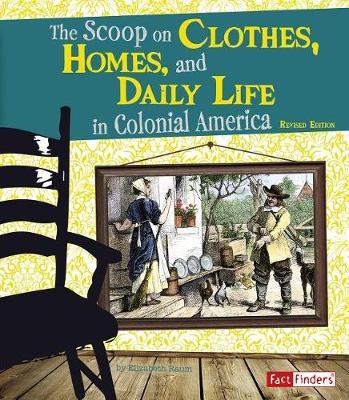Full Product Details
Author: Elizabeth Raum
Publisher: Capstone Press
Imprint: Capstone Press
Edition: Revised ed.
Dimensions:
Width: 18.80cm
, Height: 0.50cm
, Length: 21.60cm
Weight: 0.113kg
ISBN: 9781515797463
ISBN 10: 1515797465
Pages: 32
Publication Date: 01 May 2017
Recommended Age: From 8 to 10 years
Audience:
Children/juvenile
,
Children / Juvenile
Format: Paperback
Publisher's Status: Active
Availability: Available To Order

We have confirmation that this item is in stock with the supplier. It will be ordered in for you and dispatched immediately.
Reviews
""Getting lost"" in history is our wish for young researchers, and students will do just that in this series. They will find plenty of information included in fact boxes, primary source materials, maps, photos, drawings, and paintings. The series consistently shows what is familiar and foreign to the modern reader; respectfully incorporates how slavery and minority groups were treated and integrated in American colonial life; and outlines gender and generational roles. Each volume progresses chronologically, beginning with first European settlers and concluding in the mid-1700s. Because of the descriptions of familiar topics set historically, kids will make an instant connection. Useful not only for history, but science, social studies, and other classes, students will enjoy comparing their life to early colonists. Recommended.-- ""Library Media Connection"" Great for readers who are simply curious about life back then or the student who has a report to do. Comprehensive and well explained, this book is sure to reveal something you didn't know about colonial times!-- ""SWON Library Consortium, Ohio"" Simple page structure and straightforward language make these books accessible to young audiences curious about life during colonial times. Topics such as underwear and witch trials will interest reluctant readers. Photos, illustrations, maps, and accompanying captions enhance understanding.-- ""Horn Book""
Getting lost in history is our wish for young researchers, and students will do just that in this series. They will find plenty of information included in fact boxes, primary source materials, maps, photos, drawings, and paintings. The series consistently shows what is familiar and foreign to the modern reader; respectfully incorporates how slavery and minority groups were treated and integrated in American colonial life; and outlines gender and generational roles. Each volume progresses chronologically, beginning with first European settlers and concluding in the mid-1700s. Because of the descriptions of familiar topics set historically, kids will make an instant connection. Useful not only for history, but science, social studies, and other classes, students will enjoy comparing their life to early colonists. Recommended.-- Library Media Connection Great for readers who are simply curious about life back then or the student who has a report to do. Comprehensive and well explained, this book is sure to reveal something you didn't know about colonial times!-- SWON Library Consortium, Ohio Simple page structure and straightforward language make these books accessible to young audiences curious about life during colonial times. Topics such as underwear and witch trials will interest reluctant readers. Photos, illustrations, maps, and accompanying captions enhance understanding.-- Horn Book
Author Information
Elizabeth Raum has written over two-dozen nonfiction books for young readers, including a biography of Louis Armstrong for Capstone Press. Over the years, she has worked as a middle school and high school English teacher, an elementary school librarian, and a college library director. Elizabeth Raum has written many nonfiction books for children. Two of her Capstone You Choose books, Orphan Trains: An Interactive History Adventure (2011) and Can You Survive Storm Chasing? (2012), are Junior Library Guild selections. Elizabeth lives in Michigan with her husband, Richard.



